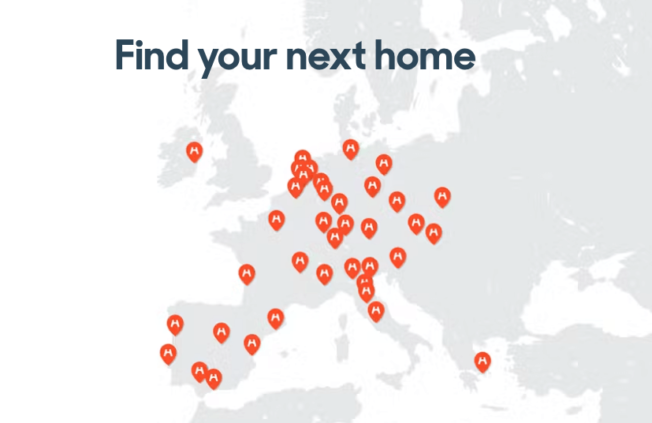07 June 2024
“The role of managers is to connect the dots” – HousingAnywhere’s Sudhan Dhayalan discusses building cross-functional teams
Many companies build cross-functional teams by the book. Today’s guest, the Head of Product Engineering at HousingAnywhere, believes they may be missing something special that helps their teams learn their lessons, unblock their blockers, and always find the best solution to a problem. Sudhan explains how a manager can become that kind of connector and facilitator in the heat of a battle, not just in theory.
The CTO vs Status Quo series studies how CTOs challenge the current state of affairs at their company to push it toward a new height … or to save it from doom.
Master cross-functional teams by becoming the connector & the facilitator
Here’s some bad news – if you ever worked on a cross-functional project, chances were 75% that the team was dysfunctional – it didn’t meet its objectives, lacked them in the first place, or didn’t stick to schedule and budget. At least, that’s what the research leads us to believe.
It’s not a surprise. Cross-functional teams offer a chance to maximize the effectiveness of cooperation between different specialists across an organization. However, creating meaningful objectives, sticking to them, and managing changing priorities in such dynamic environments is difficult.
The good news is that you can do that.
Sudhan manages both temporary and permanent cross-functional teams in his organization. His work contributed to HousingAnywhere’s position as one of the fastest-growing companies in the Netherlands. He believes that the manager of a cross-functional team has to be:
- The facilitator – in this role, they ensure that everyone can perform at their best and contribute to the team’s progress on a day-to-day and strategic level. In particular, they help members who may not be the best at collaborative work.
- The connector – in this role, they align the expectations of individual team members with the project goals and the stated goals with the actual work. They also suggest changes in the team’s makeup and review progress.
Learn how to be the facilitator and the connector by listening to Sudhan’s stories.

Bio
Sudhan started as a software engineer and gradually turned his attention towards managing development projects. He’s guided large multinational teams to success across fields as diverse as machine learning, SaaS, healthcare, insurance, and e-commerce. Sudhan applies his problem-solving skills to help teams find the most efficient ways of achieving their objectives.
Expertise
Overseeing strategic projects, strategy planning, new market expansion, Azure, Native Mobile Apps development
HousingAnywhere
Founded in 2009 as a student-to-student messaging forum to facilitate room renting, HousingAnywhere became one of the biggest platforms offering mid-term rentals in different property types, including apartments, rooms, and studios. By 2015, the company launched an online booking system. Today, along with the rental platforms Kamernet and Studapart under its umbrella, HousingAnywhere represents over 30 million yearly unique visitors combined, 160,000+ properties available for rent, and 100,000+ tenants securing their new homes, making it one of the fastest-growing companies in The Netherlands according to Deloitte’s Technology Fast 50 Ranking. The platform is available in over 125 cities.
HousingAnywhere’s vision
Sławomir Turkiewicz: Hello Sudhan. It’s great to have you here on CTO vs Status Quo. You’ve been at HousingAnywhere for almost 2 years. During that period, the company expanded outside Europe and championed exciting projects.
I read a lot about your International Rent Index. It tracks rent price development across several cities. Tell me more about it. Why does HousingAnywhere collect the data?
The International Rent Index is one way we are implementing our motto: rent easy, live free.
Making renting easy is our biggest challenge at HousingAnywhere. We want to help students, expats, and others in need of housing. I was this person myself. I had been in India for years before moving to Malaysia. Only from there did I make my way to the Netherlands. So, I moved to a new part of the world I had no idea about. When I think of our customers, I often see the old me. This expat in need has a lot to think about.
For example, in the Netherlands, the process of renting a house is very different from that in other countries like France. There are also other issues involved: how much you should charge the tenant as a fee and how much to charge for advertising.
We run experiments to provide the best experience for both tenants and landlords. Over time, we get a lot of data: the rental prices of a particular area, periodical price trends, demand against supply, and the impact it all has on the market. We can see that in a certain period of the year, the demand goes up sharply because students migrate from one place to another.
We process the data and make it available to our users every quarter as the International Rent Index. It covers 28 cities, including Amsterdam, Rome, Paris, Lisbon, Prague, Barcelona, Madrid, and Budapest.
So the role of the report is to make it easier for people to rent?
Yes. You could say that all of our initiatives have this as an overarching objective.
In this particular case, the International Rent Index is a source of information for tenants and the whole industry. We want tenants, landlords, real estate leaders, policymakers, and others to make well-informed decisions.
We carry out such focused activities to make tenants’ lives easier. For instance, we also provide a 48-hour protection window for rental users. The user typically looks for a place to stay before they relocate, so they can’t go and view the place. To protect them, we made it so the tenant has 48 hours from when they move in to report if the house is as advertised. If it isn’t, they get their money back.

Team ownership
Speaking of extracurricular initiatives, I’m sure many benefit from your strong focus on building cross-functional teams. Let’s talk about them.
Some companies with a strong product-oriented culture conduct their whole development cross-functionally. But other businesses lose interest in doing that, and their cross-functional teams fail. I heard that a major reason for this is a lack of accountability – if all departments are part of a project, it’s easy to pass the blame. What do you think?
I like thinking about it in terms of the Four Quadrants Framework, which consists of four elements: strategy, process, people, and technology.
Strategy is the core. It needs to be clear. If people don’t know what they are working towards and don’t have a shared vision, they won’t be accountable. They need to see how their responsibilities translate into the bigger picture. It makes them care more.
When you have the strategy part covered, and the problem remains, you still have options – is it a process issue, a people issue, or a technology issue? In a technical organization, technology is typically not the problem. Tech-oriented companies should look at the other areas, as there often lies their weakness.
Once you choose, you use this perspective to frame the problem.
Who has the initiative to start a cross-functional project team at HousingAnywhere?
The process has changed at HousingAnywhere as the company grew.
The process must change at each stage when you go from a startup to a scaleup and then to a full-fledged organization. What used to work when a team of 5-10 people will no longer work when you are a team of 30, 40, or 80.
At some point in our growth, we wanted to be more customer-focused. We organized our cross-functional teams by the stages of our customer journey.
So, we have a team that focuses more on the moving experience. Another is about search and discovery, another about something else, and so on.
Not only are our teams cross-functional, but they also work on projects that involve more than one cross-functional team. That’s because some projects involve more than one part of the customer journey. Whenever that happens, every team agrees that this project will be their common objective for the quarter.
As for the initiative, anybody can write a proposal and say, “This is a problem, and this is how we should solve it.”
How does it work in practice?
This is one of the processes introduced by our former VP of Engineering at HousingAnywhere (Simone). He introduced many concepts meant to empower engineers.
So if you see a problem, you don’t have to wait for others to come and tell you to fix it. You can write your proposal and send it to the entire team. Anybody can review it and add their input. Then, you can form a team to work on this problem.
We even have something called the 10% Growth and Innovation time. Engineers can use it to work on such initiatives.
Team selection
Let’s say a decision was made to create a cross-functional team around a new initiative. It requires developers, designers, product managers, marketing, salespeople, and more. Let’s go over some good practices for team selection.
What role should an initiative owner have in the selection?
There’s always one person who owns the initiative itself – the idea and vision behind it. Of course, management decides if there is an ROI or benefit to actually doing it.
When we find out how the initiative looks in the customer journey and what user touchpoints it covers, we can assign the right key people – designers, frontend or backend developers, platform engineers, or marketing people. We call such a temporary cross-functional team a focus group.
A team charter is created that lists each teammate’s roles and responsibilities. Everyone has access to it, so they can revisit it three or six months after the project starts. This helps ensure that nobody loses sight of what they’re striving for on the individual and team levels.
That’s how we break down an initiative to make it measurable, relevant to our business value, and integrated properly within our broader product.
What if someone wanted to be part of such a cross-functional team but is also needed elsewhere?
At HousingAnywhere, every team member has a career plan that clearly sets goals and expectations. The plan also includes the engineering career path, which goes from level 1 to level 5. We take all that very seriously.
What’s more, the career plan is a collaborative effort, not a top-down approach in which managers impose expectations on team members. Instead, everyone writes their own personal development plan stating what they would like to do in the next three to six months.
The role of managers is to connect the dots. They look at projects and decide if there is an agreement between what the personal plan states and what actually happens. To maintain the agreement, they conduct many 1:1s with every team member. Sometimes, when they find out that someone would be a better fit for another project, they suggest changing their plan.
Of course, there is always a very enthusiastic team member who would like to be part of every project. Everything looks interesting to them. I love enthusiastic people, but sometimes you need to tell them that they need to choose: “OK. There are two projects – which one would you rather be a part of?”.
Some people want to reskill and use a project as an opportunity to do so. That’s fair, provided they still meet the requirements of the new project and make the reskilling part of their development plan.
It is very interesting to use cross-functional teams to improve one’s skills. A collaborative approach to product development seems to help polish one’s communication skills.
Can participation be an icebreaker for those less capable communicators? Or should one avoid bringing in people who may not be the best at it?
Exposure to collaboration may encourage some to move outside their comfort zones, which is how learning happens.
Engineers tend to be a little introverted. They need a safe environment and mentoring to excel. However, their lack of interpersonal or communication skills doesn’t mean they can never work on a cross-functional project. Provided there is a person there who acts as a facilitator for the team, even extreme introverts can do well. This facilitator becomes the project owner. It may be the initiative owner or someone whose career plan makes them a good match for the role.
But you also have to understand, as a manager, that some people want to push past their comfort zone while others don’t. The goals and expectations set in their career plans should reflect that. You have to put the right people in the right place at the right time for them to excel personally and professionally.
So, if you want people to step outside their comfort zones, you will have to create opportunities for them. A person may have potential, but they need the right environment to grow. Put them in the right projects and mentor them by giving them constant feedback and guidance.
Team alignment
You mentioned the need to align an individual’s goals and day-to-day responsibilities. Let’s talk team alignment.
A lack of alignment ruins cross-functional projects. It’s easy to see why. The company has its overarching goals, departments have their objectives, and cross-functional teams, made up of people from these departments, also have objectives.
Let’s start with corporate goals. How do you continue to align your cross-functional team’s goals with them?
Transparency is the key. We are completely transparent about our project, which we achieve in practice using a project management tool.
Like I said, every project has a charter, which is a Single Source of Truth. It clearly explains what we do and why we do it, what success is meant to look like, and what broader corporate goal it adheres to. If someone is curious about a certain project, they can simply read the documentation.
OKR-driven teams also have their own goals fed into our Atlassian tool. Then, we have the outcome-driven goals and projects. We can see which project is associated with which goals. The outcomes are owned by senior managers, product managers, and engineering managers, and the projects are owned by team members.
Once we started introducing this process, it helped keep our teams aligned, which is always a challenge with distributed teams working remotely like ours.
What’s more, our goal alignment process also empowered team members to make decisions on their own. Nobody can say that they lacked high-level project information or that all they could do was listen to commands from higher-ups. If they are curious enough, all the information is there to find.
This knowledge exchange is not all ad hoc. We do a review every quarter. Each team has its ritual around this, but they aim to remember their goals, requirements, blockers, learnings, and risk analysis. Likewise, the management, including our CEO, reviews quarterly or weekly. Again, all these reviews are transparent.
I must say that it’s a sound way of ensuring that everyone is aligned on objectives. And the way you ensure accountability with transparency goes hand-in-hand with the idea of self-managed teams.
But let’s consider a situation when the goals of different departments clash. Teams may have different ideas about what to pursue. But resources are limited. Transparency alone won’t solve this. Is it easier or harder in cross-functional teams?
We come across the problem from time to time. And we deal with it with OKRs.
At the beginning of every quarter, we come together as a company and as teams to decide our cross-project dependencies. If our project or goal clashes or overlaps with another team’s, the PMs take the responsibility to collaborate and come up with a plan for moving forward. Only then will the quarter kick-off.
Still, I think these types of conflicts are natural, regardless of how good your processes are or whether you are cross-functional. What matters is being able to solve them when they arise. That’s a matter of effective collaboration between managers. It’s the alignment of managers that helps solve conflicts down the line.
Team performance
The alignment issues also mean that the efficiency of cross-functional collaboration may be more difficult to assess. We talked about clashes. But the opposite may also happen – shared ownership of the project may result in no one being there to pull the plug, so to speak, when it doesn’t go so well.
If the cross-functional team fails to reach its objectives, how do you decide to continue with the project?
Failure is a strong word. You only really fail when you stop trying. At HousingAnywhere, we always look at it this way and never scrutinize anybody, either on an individual or team level.
Some projects might be unsuccessful, but there’s always a lesson to be learned from them. We can shift the conversation in a new, more productive direction by asking about the lessons instead of criticizing someone.
Then, we document the findings. We might have halted a project for various reasons. The team might have lost heart for it. Our business objectives might have shifted towards something else. Or we might have underestimated the scope of the project. One way or another, we learned something. We can use the insights three or six months later to continue towards the same objective or another one.
Culture
We discussed the practical considerations of cross-functional team management.
Let’s close the interview with some advice for leaders who aren’t there yet. Their departments work in silos, and there is not much cross-cooperation. How do you begin a conversation about the need for it and move your organization’s culture in the right direction?
You can get a lot of things done collectively as teams compared to what they can do by themselves in a silo. Your role as a manager is to make it clear to everyone and then to facilitate it. How to do it?
There are many aspects to it, but I think that the personal qualities and skills of the manager will play the biggest role. Everyone knows IQ and the conversation about EQ (Emotional Intelligence) has become more popular. But there’s also CQ – the Cultural Intelligence. When you work with people from around the world like I do at HousingAnywhere, CQ becomes a key factor in facilitating a change.
Because to make a change, you need to bring people together, have empathy, give them a common purpose, and motivate them.
Resources
What learning resources would you recommend for tech leaders interested in fostering cross-functional collaboration?
I’d recommend Harvard Business Review. It posts a lot about honing interpersonal skills and managing various team problems, and it always features tons of practical examples.
I also always go back to Never Split the Difference by Chris Voss. It has taught me the importance of empathy in a manager’s work. It helped me communicate better with others by putting myself in their shoes. I found out that they are much more receptive to your ideas when you do that. Culture Map is great for improving your CQ level.
But to those just starting as technical leaders, I’d say that mentorship is the most important thing. I was lucky to have great mentors on my path.
Look for mentors who have already achieved what you want to achieve in the future. Learning from them will push you 10 years closer to your goals in no time. It’s really that big of a difference!
What’s next? Two actions for CTOs to take
What do you think? Are you ready to keep a cross-functional team efficient and focused on its objectives?
Remember – it all starts with the changes you make in yourself, so:
- change your mindset – to be the connector and facilitator your team needs, you must ensure that each teammate performs at their best proactively. Use career plans to keep track of their growth and 1:1s to help them adjust along the way.
Only then can you start making changes in your organization:
- change your processes – using project charters and multi-level goal tracking to keep cross-functional teams aligned with the company’s overall direction. Make the information easily accessible to everyone to promote accountability.
Good luck with your next cross-functional project.
Want to learn more about HousingAnywhere's mission?
Visit the page to find information about the tenant and landlord experience, complete with how-to guides, FAQs, and blog articles.


